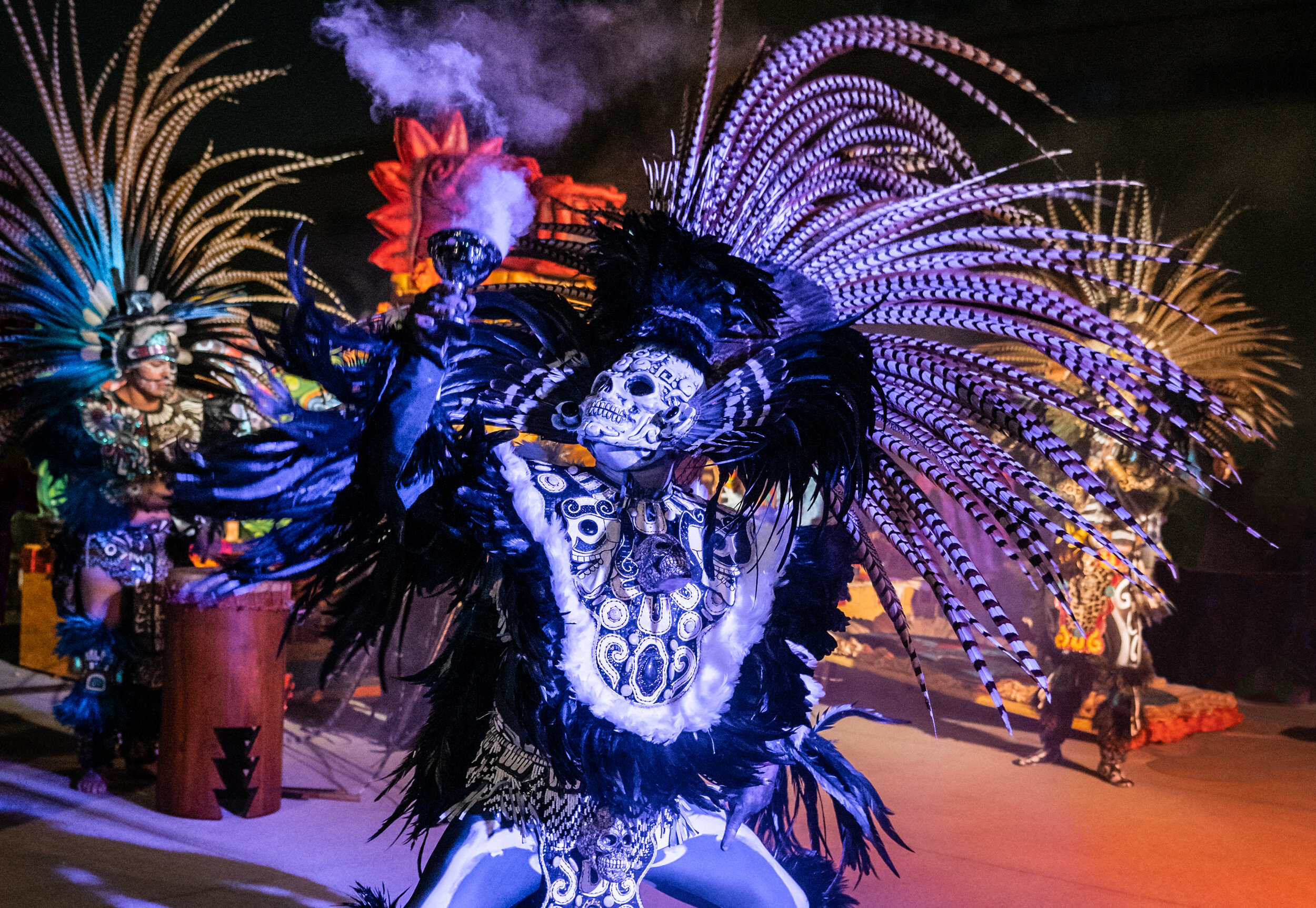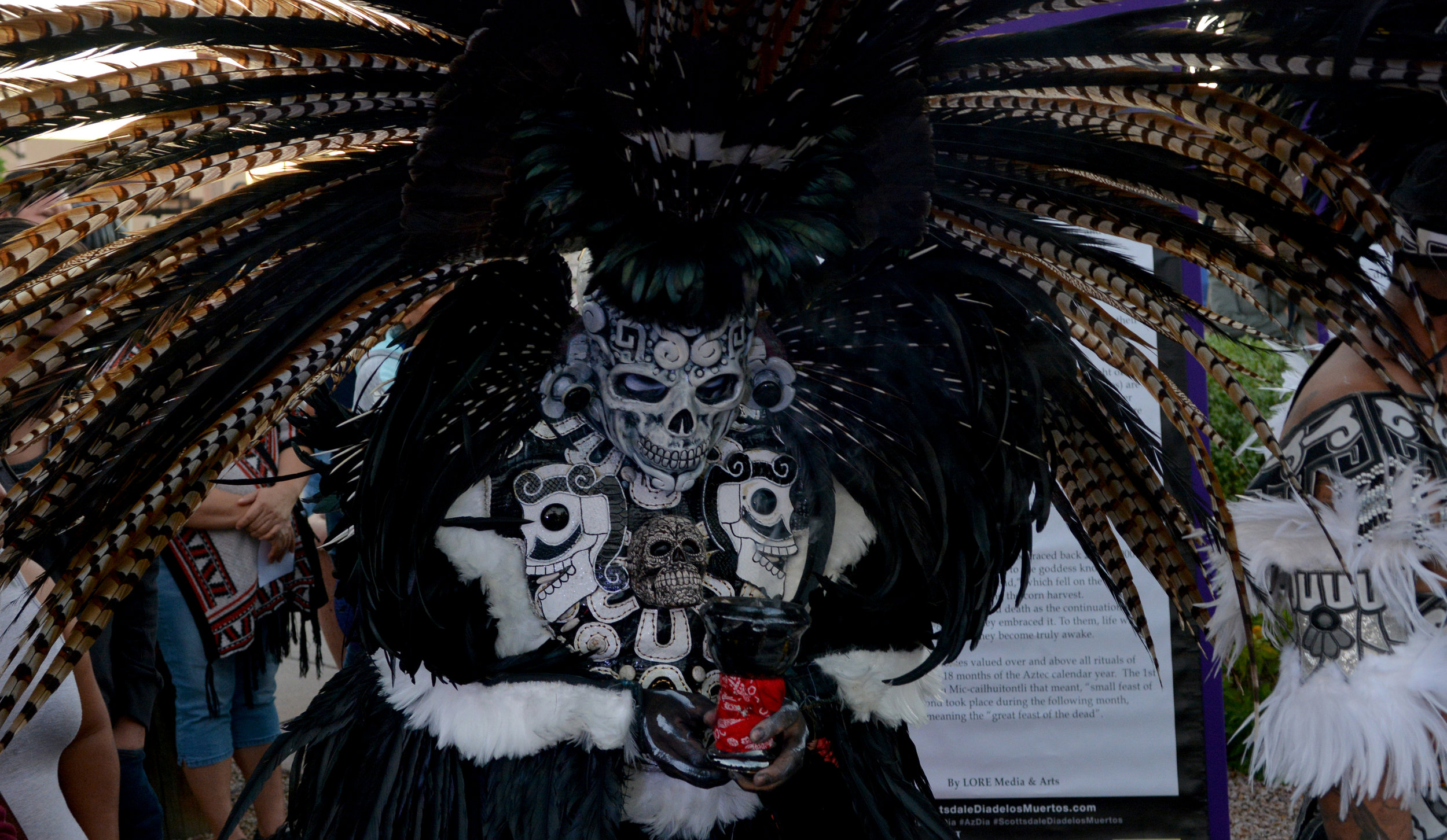
History of a tradition...
Dia de Los Muertos Origins
Dia de Los Muertos, which coincides with All Saints’ and All Souls’ Day is a Mexican holiday now observed throughout the world. The celebration centers upon remembering friends and family members who have passed away, allowing the dead to live on through the memories of the living.
On Dia de los Muertos, the dead are supposed to awakened from their eternal rest to share remembrance with their loved ones between October 31st through November 2nd. Most believe the gates of heaven are opened at midnight on October 31st, and the spirits of all deceased children (angelitos) reunite with their families for the day. On November 2nd, adult spirits return to enjoy the festivities.
Homes, cemeteries, and public spaces await spiritual visitation. Traditions include gravesite decoration with gifts, flowers and possessions, construction of sculptures, paintings, and private or public altars honoring the deceased with marigolds, sugar skulls, notes, photos and favorite foods of the departed.
Dia de los Muertos,
a deep and ancient tradition…

Mesoamerican Origins
The origins of Dia De los Muertos can be traced back 2500 – 3000 years to the Aztec Festival dedicated to the goddess known as Mictecacihuatl “The Lady of the Dead,” which fell on the 9th month of the Aztec calendar during the corn harvest. Mesoamerican civilizations viewed death as the continuation of life. Instead of fearing death, they embraced it. To them, life was a dream, and only in death did they become truly awake.
There were two ceremonies valued over and above all rituals of death throughout the 18 months of the Aztec calendar year. The 1st fell in the ninth month Mic-cailhuitontli which meant, “small feast of the dead,” and the second took place during the following month, Hueymiccaihuitl, meaning the “great feast of the dead”.
“The four elements... earth, wind, fire, water are central to our offerings.”
LORE Media & Arts

The Offerings
ALTAR OFFERINGS
Dia De Los Muertos revolves around ofrendas, or offerings, which are created through a visual display of altar-making and grave decorating. The offerings, a main focal point of the celebration, echo the dedication and distinct love that is presented toward the dearly departed. The altar includes the four main elements of nature – Earth, Wind, Water and Fire.
EARTH
is represented by the crop: The soul is fed by the various earthly aromas. Placing fruit or favorite family dishes on the altar provides nourishment for the beloved souls.
WIND
is represented by a moving object: Paper- Mache is commonly utilized to represent the echoes of the wind.
FIRE
is represented by a wax candle: Each lit candle represents a loving soul, and an extra one is placed for the forgotten soul.
WATER
is placed in a container for the soul to quench its thirst after the long awaited journey to the altar. Water is also used for the means of purification.
AZTEC MARIGOLDS
or Cempasuchitl, known as “The flower of the dead” blossoms in the valleys of Mexico during the months of October and November with a bright yellow color and is central to altar decorating. This flower aids the spirits to wander back.
COPAL INCENSE
is an important ceremonial resin long used in Central America and Mexico as a sacred incense by the Aztecs and Mayans. It comes from the torchwood tree family, and it is burned during Dia de los Muertos to honor Pre-Columbian cultures.





